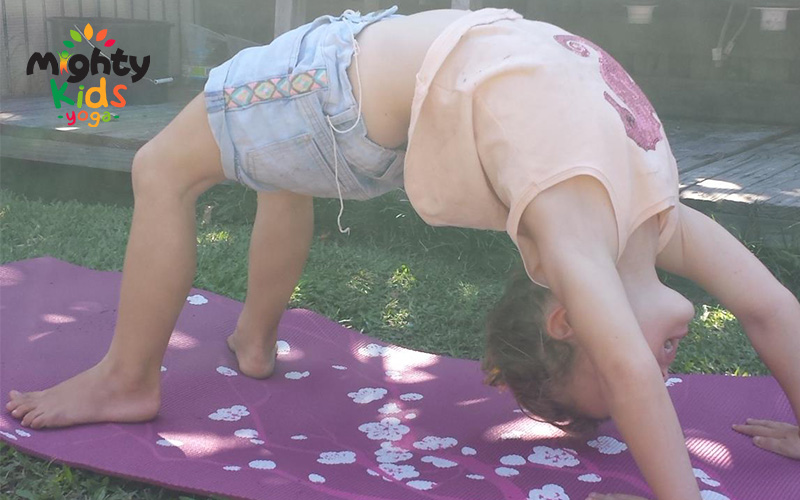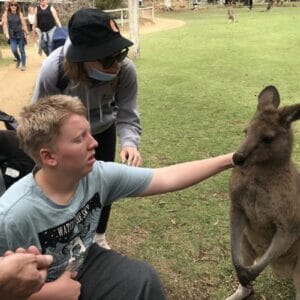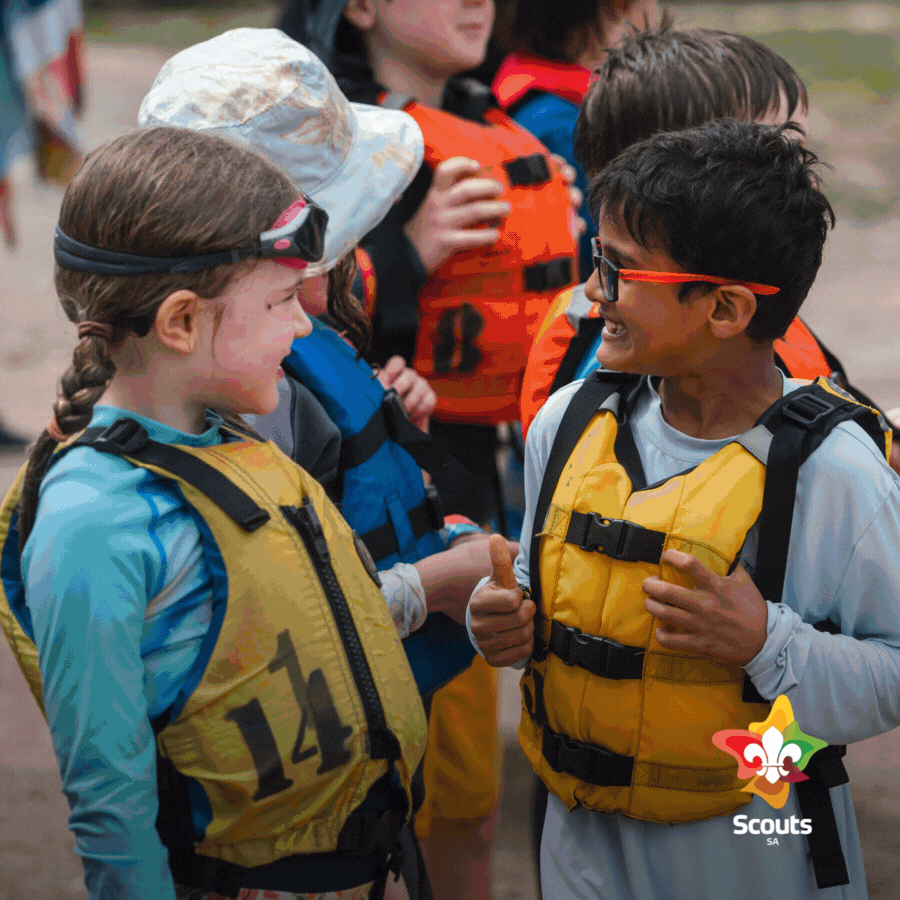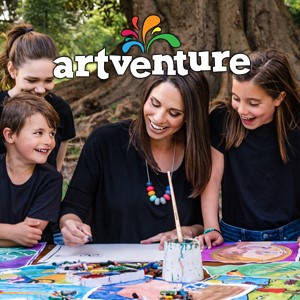We all know that yoga is a fantastic workout for us as adults, bringing about both stress-reduction as well as increasing physical strength and flexibility. These same benefits can help our kids too. Chances are your kindy or school child is already doing yoga for this reason. Schools have gradually seen the benefits of teaching yoga to students, as even just a few minutes can improve classroom behaviour, reduce anxiety and increase concentration.
Sound good huh? Here’s why it works….
Yoga enhances physical strength, flexibility and coordination – Yoga requires kids to move their bodies in ways that they may not usually do in their usual day (particularly sitting at a desk at school all day). Whether a pose is done standing, sitting, lying down or twisting, each movement challenges their muscles and increases their body awareness of how their body functions. It also leads to improved coordination and overall dexterity.
Yoga develops focus and concentration – practicing a pose, particularly one which requires balance, encourages children to clear their mind and focus on the task at hand. With regular practice, this improves their ability to concentrate and focus on their school work for longer periods of time, resulting in improved learning.
Yoga boosts self-esteem and confidence – The feeling of accomplishment from mastering a pose improves a child’s confidence and self-esteem. Yoga teaches them to persevere, be patient, and work towards their goals. It also provides the tools for practicing compassion, mindfulness, and generosity.
Yoga strengthens the mind-body connection – Yoga exercises the physical body while also calming the mental spirit. Difficult poses force children to still their mind and concentrate on the mastering the pose. Focusing on their breathing, as well as spending time in meditation, even for just a few minutes, can give children the opportunity to shut out the outside world and be present in the moment.
Yoga reduces anxiety – The improved mind-body connection has an even more profound effect on those children suffering anxiety. By teaching them how to control their emotions and breathing, we can reduce the physiological symptoms that are usually brought about by feelings of anxiety. Deep belly breathing is particularly useful in reducing anxiety as it brings more oxygen into the body, the opposite of what happens during a panic attack.
Yoga can be done anytime and anywhere – Yoga doesn’t require any expensive props or clothes (although there are plenty out there). Even a mat can be optional – all you need is a bit of space on the carpet for you and your child to start practicing some poses. You may find this particularly beneficial to do just before bedtime when you are winding them down for a good night’s sleep.
We have explained 5 poses below that you can start doing with your child today.
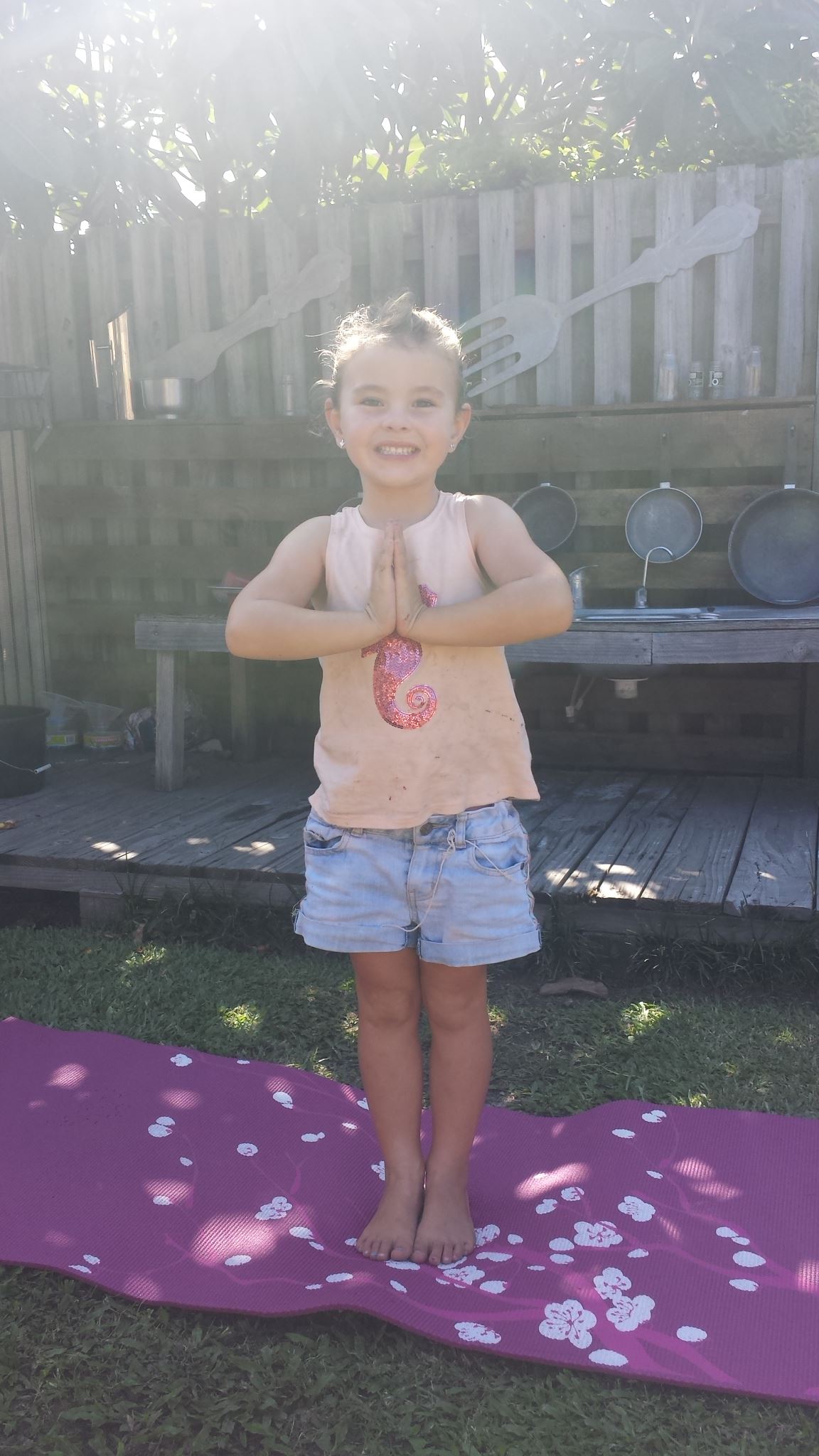
Mountain (Tadasana)
Stand with your feet hip-width apart. Press down evenly through your feet and make your legs strong and grounded to the floor like they are rooted to the earth. Stretch your spine up so it is long and tall. Roll your shoulders back and press your palms together at your heart. Check in with your child by telling them you are going to try and push them over – they love showing you that they are as strong as a mountain!
Mountain pose is the foundation of most other yoga poses. It improves concentration and focus, and calms the mind and the nervous system.
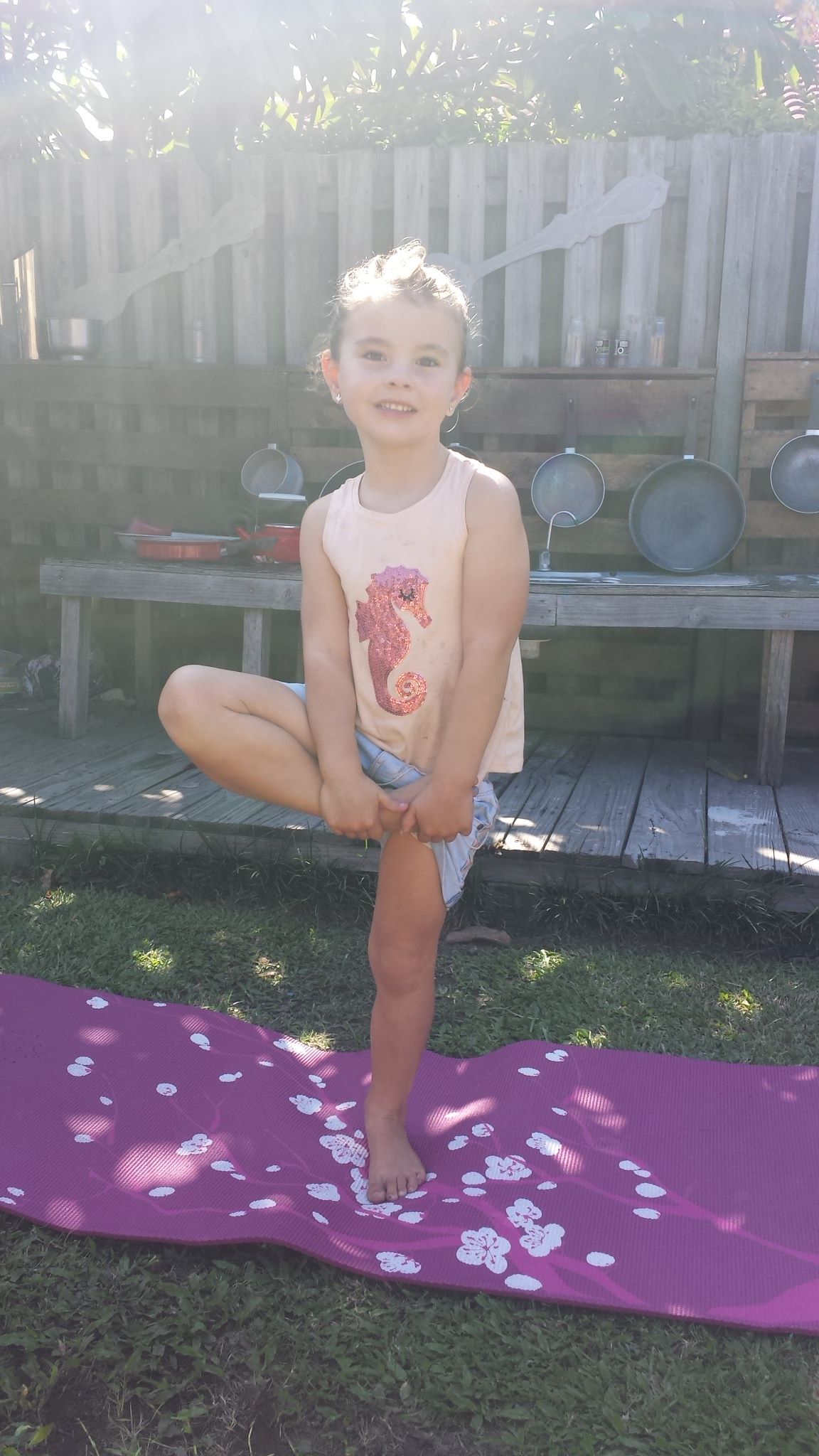
Tree pose (Vrksasana)
Beginners start by standing tall, placing the heel of one foot on top of the other and bringing your hands together at your heart. As you find your balance, try and lift the top foot further up the side of your standing leg, (to your calf or your thigh but never on the knee). Tell your child to reach their branches (arms) up to the sky. You can pretend to try and blow them over, or you can see who can balance for the longest.
Tree pose strengthens the legs and back, improves balance and opens the shoulders and chest. It improves balance, focus and concentration.
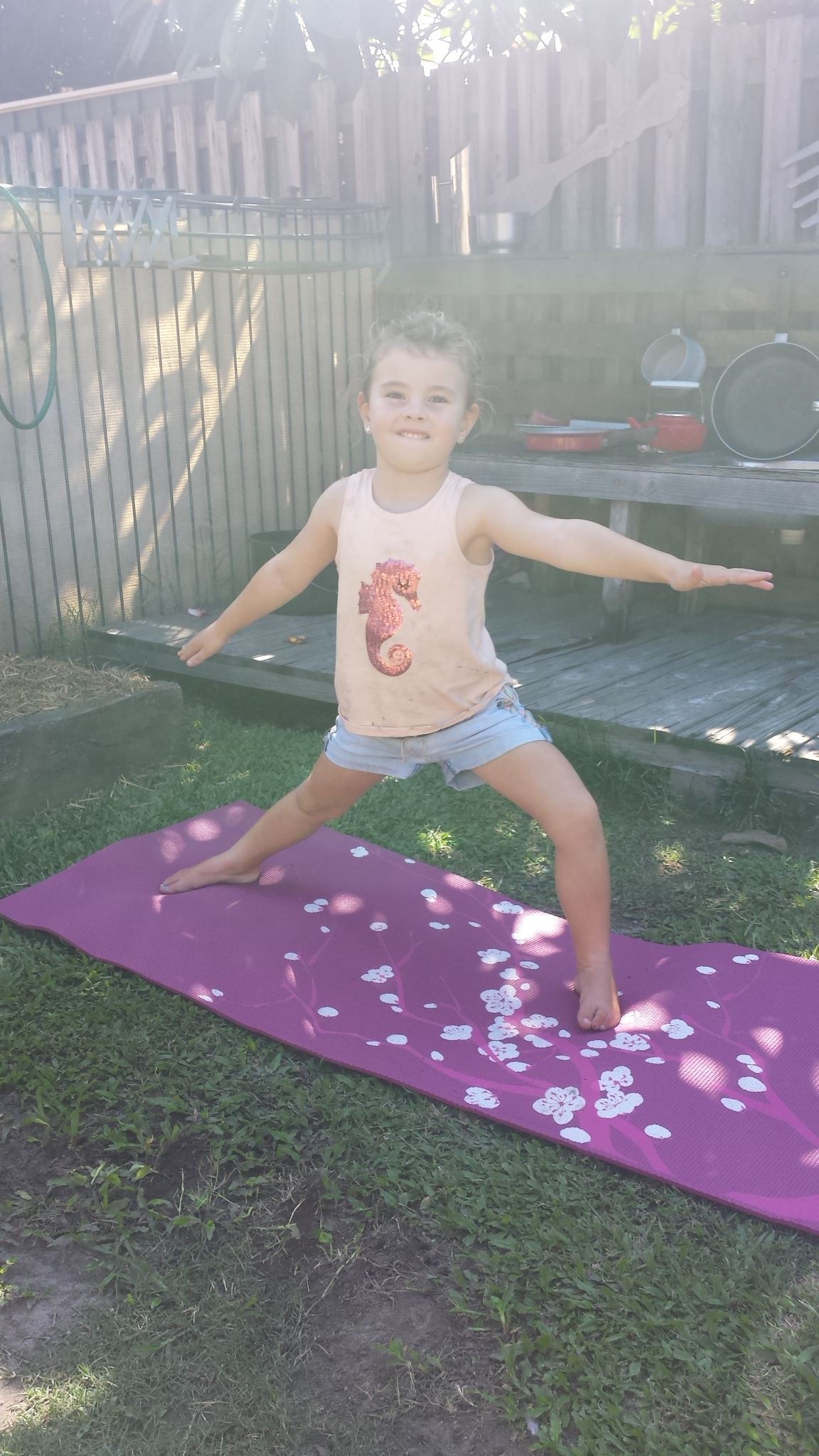
Surfer (Virabhadrasana II /Warrior 2)
Standing with your feet wide, turn your front foot out (to the top of your mat if you are using one). Bend your front knee so that it is above your ankle and spread your arms out wide looking over your front hand.
This pose strengthens and stretches the legs, and opens the hips and chest. It improves circulation, respiration and energises the entire body.

Dog (Adho Mukha Svanasana /Downward Facing Dog)
From a tabletop position on the floor (arms under shoulders and knees under hips), press your palms and feet into the earth, as you straighten your legs and lift your hips toward the sky. Think of trying to make an upside down V. Let your head hang between your shoulders.
Downward Dog deeply stretches the back, opens the chest and builds upper body strength. It stimulates the brain and nervous system, wakes up a tired mind, and helps to change your perspective by literally turning your world upside down.
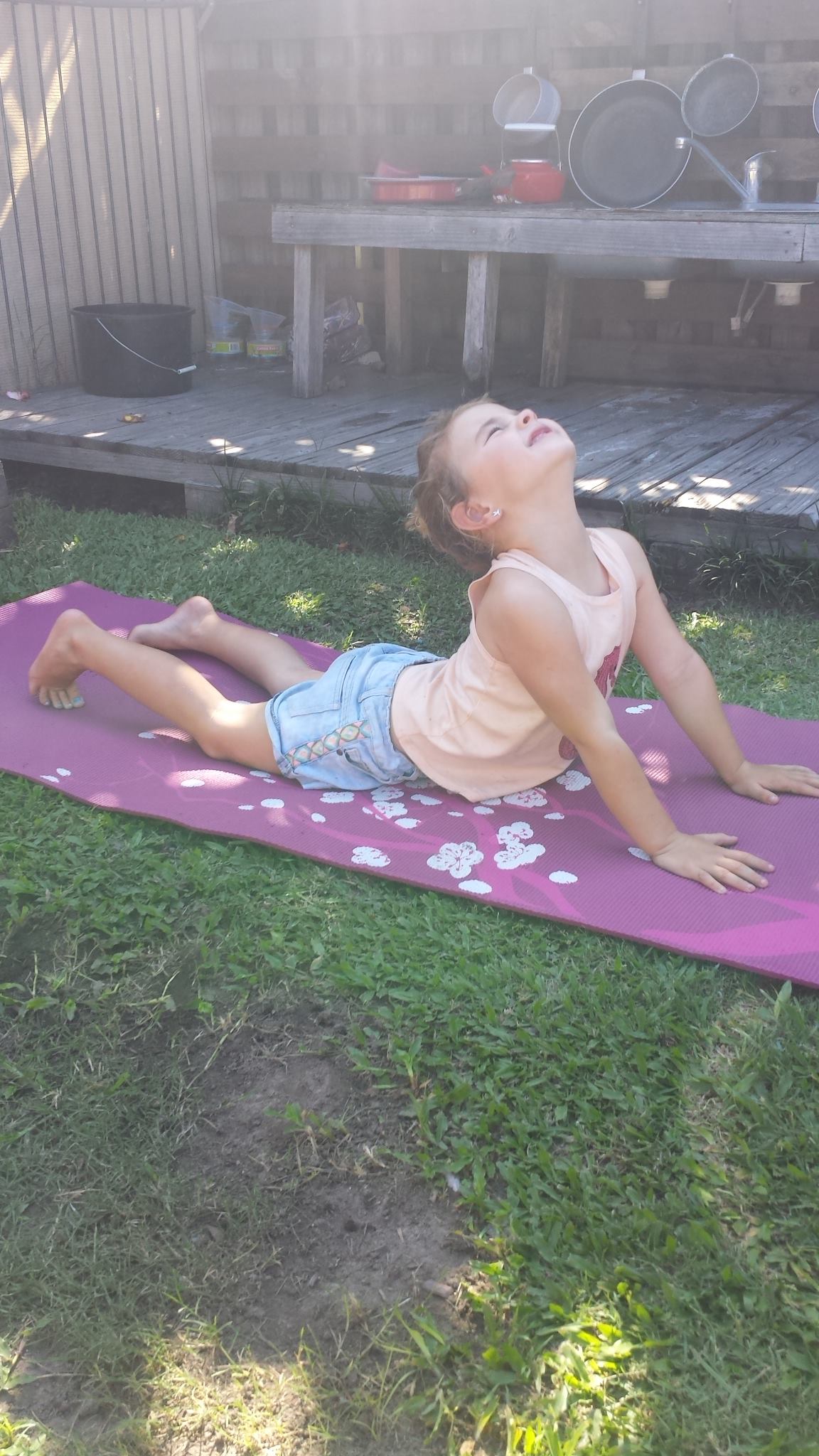
Snake (Bhujangasana/Cobra)
Come onto your belly and place hands on the floor underneath your shoulders. Press through your palms to lift your chest, lengthening through the neck and dropping your shoulders down your back. Hissing like a snake is recommended.
Snake pose opens the chest and strengthens the core body, invigorating the nervous system.
Further reading on the many benefits of yoga for children:
www.yoga4classrooms.com/supporting-research







